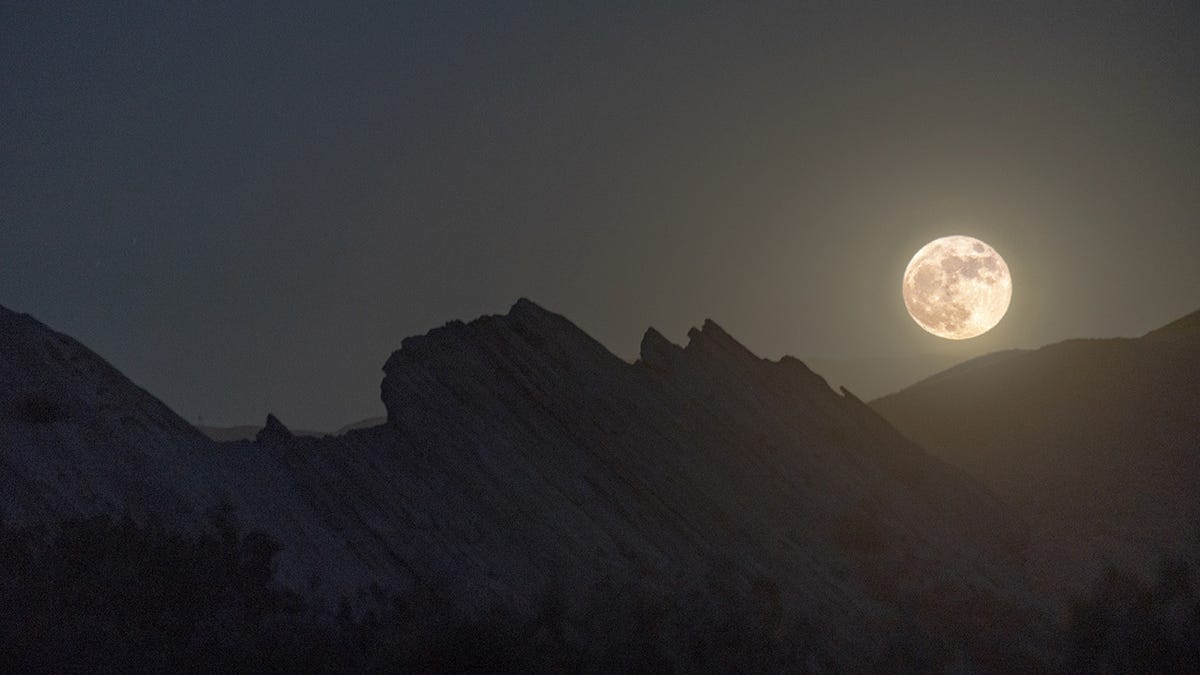How to See the Full Hunter's Moon That Lasts All Weekend Long
For several nights in a row, the moon will be big and bold.

A full moon rises over Vasquez Rocks Natural Area Park in Santa Clarita, Calif.
You probably know that the cosmos treat us to a full moon about once a month, but when we come close to the autumn equinox in the northern hemisphere, sky watchers get a little bonus in the form of a moon that appears big and full for multiple nights in a row.
The reason for this has to do with the geometry of the moon's orbit and Earth's axial tilt. Basically, the moon is moving at a more narrow angle with regard to the eastern horizon, causing it to rise closer to the time it did the previous night on successive nights compared with other times of year.
For example, typically the moon will rise about 50 minutes later each day, but during this time of year it rises just 25 minutes later each evening. That's a big difference, and the result is the ability to see a full to nearly full moon rising within about an hour of sunset for several nights in a row in many locations north of the equator.
Starting Friday evening, you can head outside around an hour before sunset (check a sun and moon calendar for your location for exact times) and look toward the eastern horizon for the big, round rising moon. You can repeat this process about 25 minutes later each successive night and you should still get the full moon effect through Tuesday.
That's a lot of luminous lunar action.
This particular full moon is nicknamed the Hunter's Moon, and it officially reaches its maximum fullness on Sunday. The Hunter's Moon follows the Harvest Moon and is the first full moon after the northern autumn equinox. According to the Farmer's Almanac, the nickname dates back to at least a 1710 entry in the Oxford English Dictionary. Other nicknames used by North American indigenous tribes are similarly self-explanatory, including the Falling Leaves Moon and Freezing Moon.
Thanks to an optical illusion that isn't yet fully understood, the full moon looks especially huge just as it is rising over the horizon in the evening before seeming to shrink as it moves higher in the sky through the night.
It also looks a little more orange than usual when low in the sky, which is a different effect that has to do with the fact that we observe it through more of the atmosphere when it's near the horizon. Particles in the air scatter the light and give it a yellow, orange or reddish hue. If there's smoke or air pollution in the air, the effect can be more dramatic.
All these should be more than enough reasons to plan to step outside as your days draw to a close this weekend and simply gaze to the east and take a breath and a break.
And if you get any great shots of the big moon, share them with me on Twitter @EricCMack.

